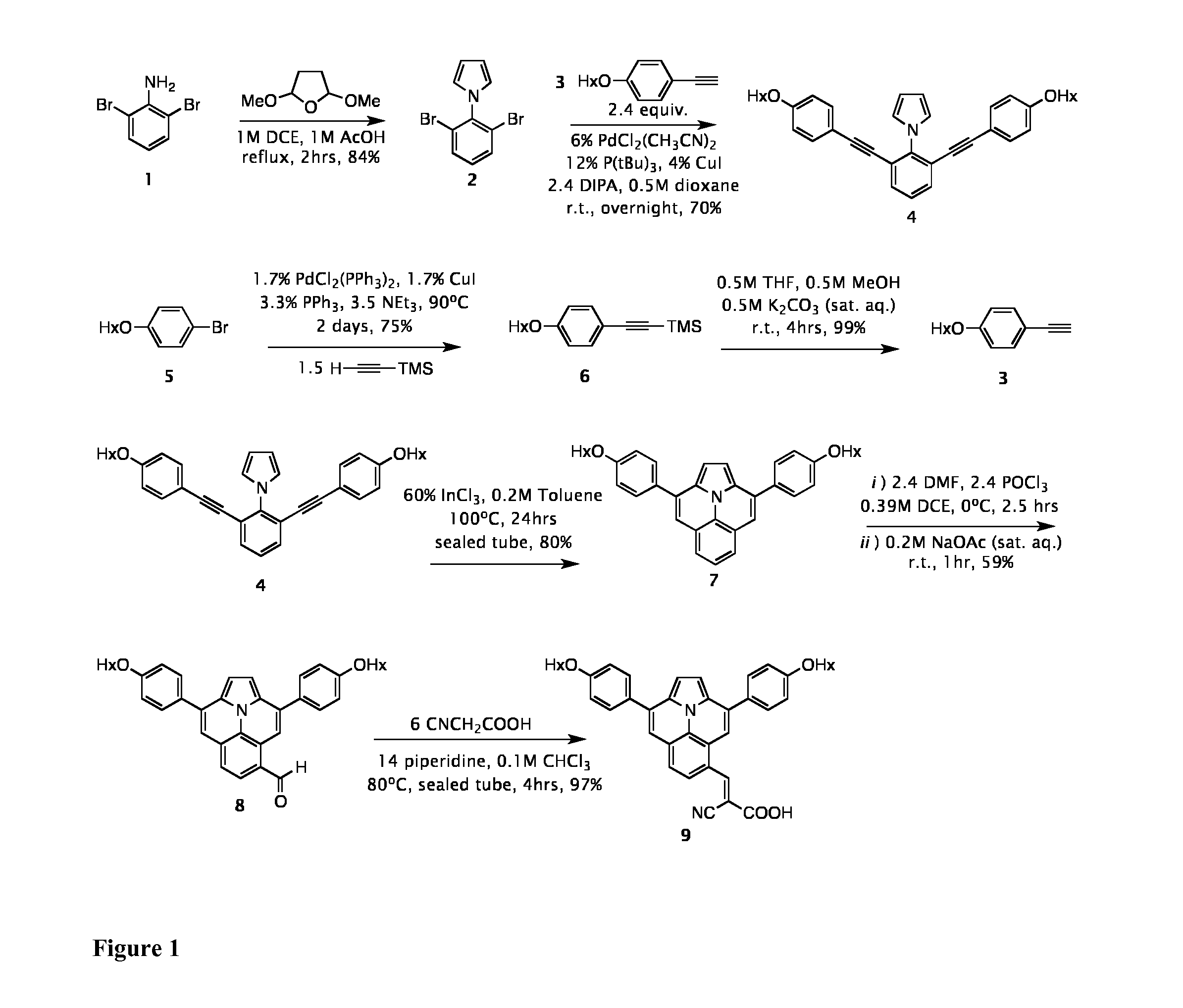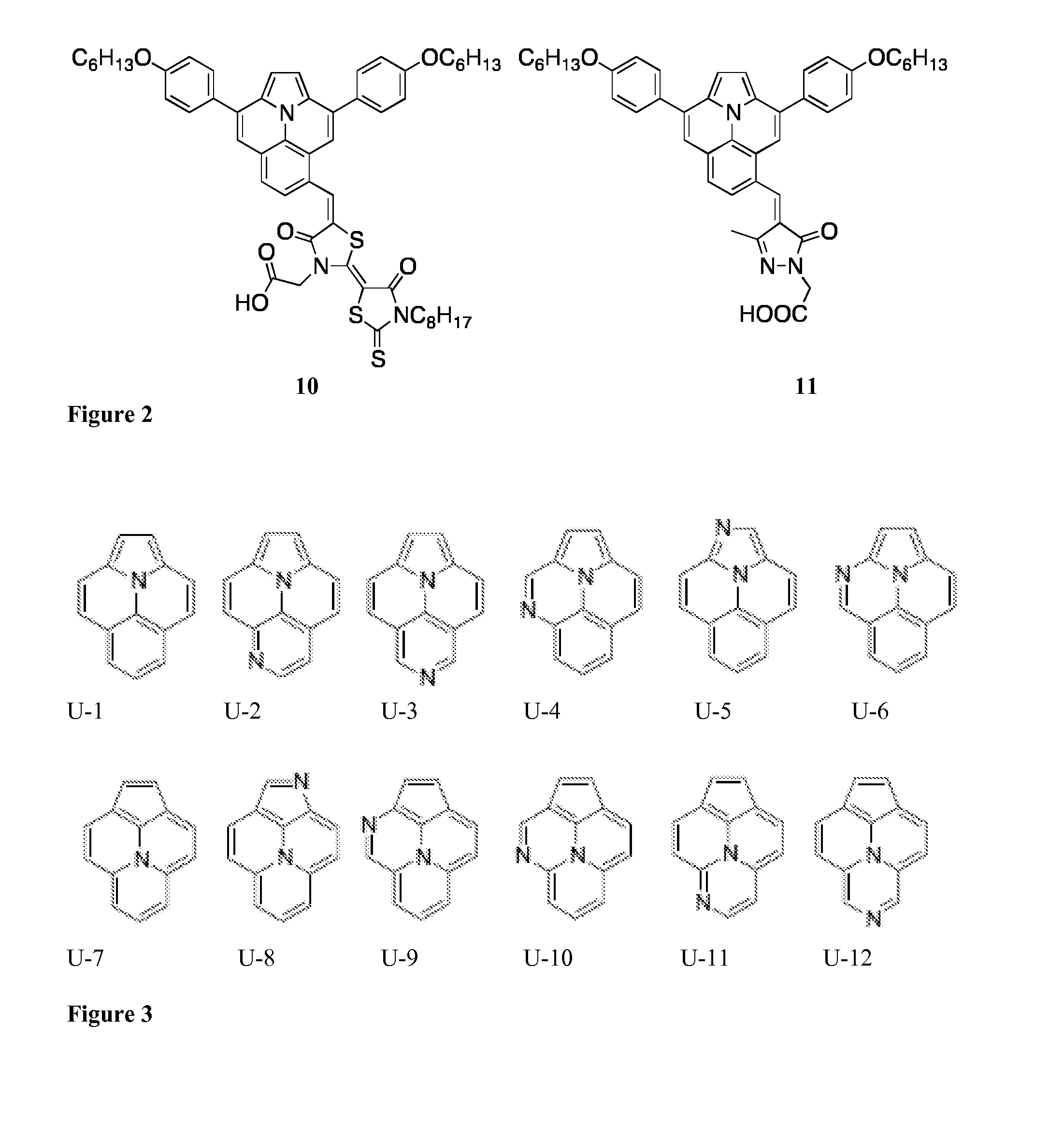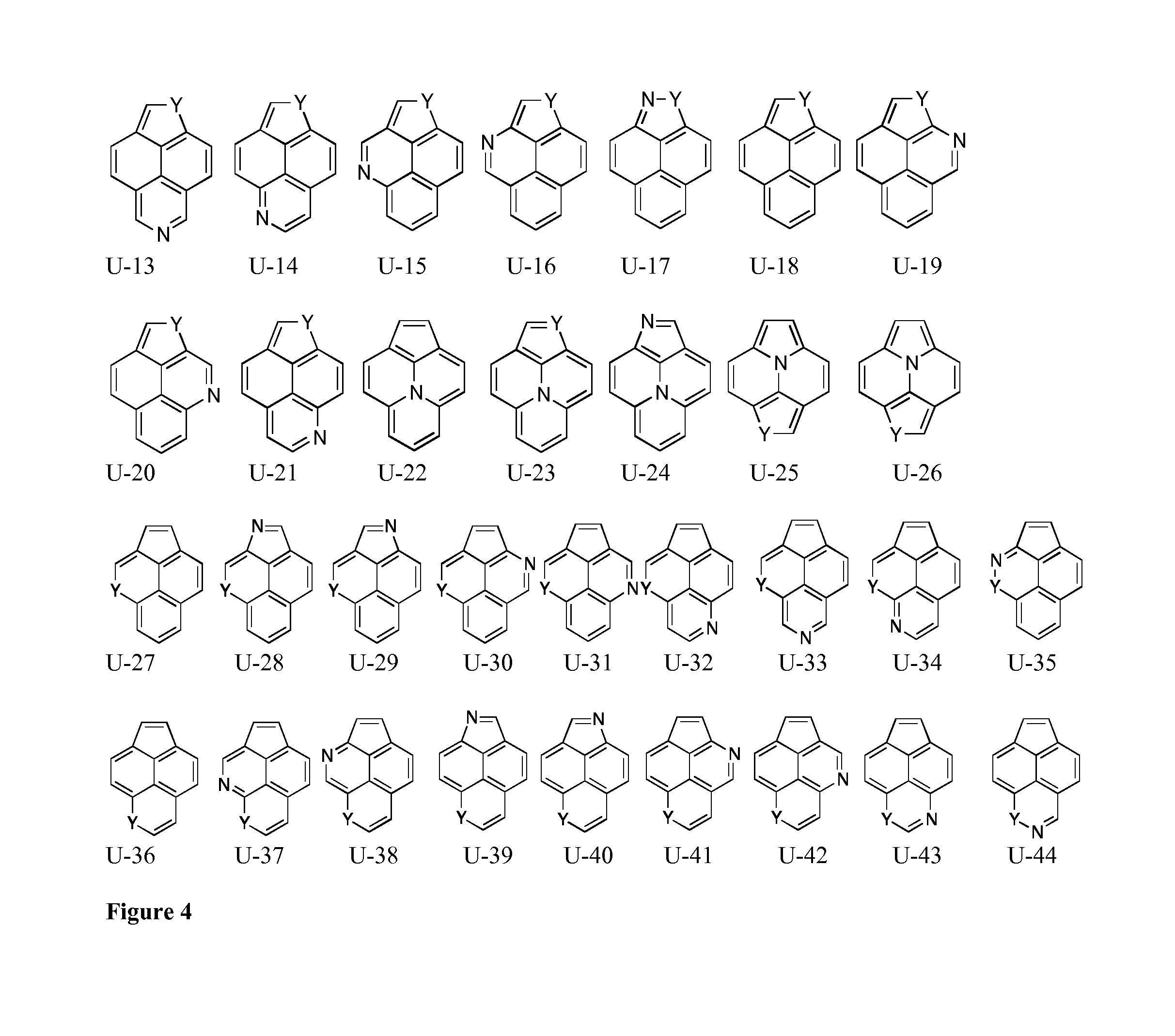Compounds for electrochemical and/or optoelectronic devices
a technology of optoelectronic devices and electrochemicals, applied in the field of compounds, electrochemical and/or optoelectronic devices, can solve the problems of high production process cost, environmental problems of silicon solar cells, and conventional fossil fuels as energy resources, and achieve high power conversion efficiency ()
- Summary
- Abstract
- Description
- Claims
- Application Information
AI Technical Summary
Benefits of technology
Problems solved by technology
Method used
Image
Examples
example 1
Synthesis of Novel Sensitizers (Compounds 9 to 11)
General Information:
[0179]All commercially obtained reagents were used as received. Thin-layer chromatography (TLC) was conducted with Merck KGaA pre-coated TLC Silica gel 60 F254 aluminum sheets and visualized with UV and potassium permanganate staining. Flash column chromatography was performed using Silicycle UltraPure SilicaFlash P60, 40-63 μm (230-400 mesh) (Still, W. C. et al. J. Org. Chem. 1978, 43, 2923.). 1H NMR spectra were recorded on a Bruker Avance-400 (400 MHz), Bruker AvanceIII-400 (400 MHz), or Bruker DPX-400 (400 MHz) spectrometer and are reported in ppm using solvent as an internal standard (CDCl3 at 7.26 ppm). Data reported as: s=singlet, d=doublet, t=triplet, q=quartet, p=pentet, m=multiplet, b=broad, ap=apparent; coupling constant(s) in Hz; integration. UV-Vis spectrums were measured with a Hewlett Packard 8453 UV-Vis spectrometer. Cyclic voltammetry was measured with an Autolab Eco Chemie cyclic voltammeter.
Synt...
example 2
Preparation of TiO2 Substrate with Adsorbed Dye (Compound 9)
[0190]The nanocrystalline TiO2 pastes were prepared using a previously reported procedure [Ito, S. et al. Fabrication of thin film dye sensitized solar cells with solar to electric power conversion efficiency over 10%. Thin Solid Films 516, 4613-4619 (2008)]. Nanocrystalline TiO2 films were prepared by spreading a viscous dispersion of colloidal TiO2 particles on a conducting glass support (Tec15, Pilkington or Asahi TCO glass, fluorine-doped SnO2 overlayer, transmission >85% in the visible sheet resistance 7-8Q / square) with heating under air for 30 min at 450° C. The TiO2 transparent electrodes composed of ˜20 nm anatase on fluorine doped tin oxide conducting glass were controlled from 2 to 14 μm by a number of screen printing. In order to render high power conversion efficiency, ˜5 μm scattering layer (400 nm diameter, CCIC, HPW-400) as light scatter was deposited on the transparent layer. After cooling to room temperatur...
example 3
Photovoltaic Measurements
[0195]For photovoltaic measurements of the DSCs, the irradiation source was a 300 W xenon light source (Osram XBO 450, Germany) with a filter (Schott 113), whose power was regulated to the AM 1.5 G solar standard by using a reference Si photodiode equipped with a colour matched filter (KG-3, Schott) in order to reduce the mismatch in the region of 350-750 nm between the simulated light and AM 1.5 G to less than 4%. The measurement of incident photon-to-current conversion efficiency (IPCE) was plotted as a function of excitation wavelength by using the incident light from a 300 W xenon lamp (ILC Technology, USA), which was focused through a Gemini-180 double monochromator (Jobin Yvon Ltd.).
[0196]The results are shown in Table 1 below and FIGS. 7 and 8. More specifically, IPCE at 540 nm wavelength is 98.4%, at 550 nm 92.6% and at 700 nm 13.4%.
TABLE 1Performances of DSSC employing an Ullazine-core based dye(compound 9)% sunVOC (mV)JSC (mA cm−2)FFPCE η (%) 9.5%6...
PUM
 Login to View More
Login to View More Abstract
Description
Claims
Application Information
 Login to View More
Login to View More - R&D
- Intellectual Property
- Life Sciences
- Materials
- Tech Scout
- Unparalleled Data Quality
- Higher Quality Content
- 60% Fewer Hallucinations
Browse by: Latest US Patents, China's latest patents, Technical Efficacy Thesaurus, Application Domain, Technology Topic, Popular Technical Reports.
© 2025 PatSnap. All rights reserved.Legal|Privacy policy|Modern Slavery Act Transparency Statement|Sitemap|About US| Contact US: help@patsnap.com



